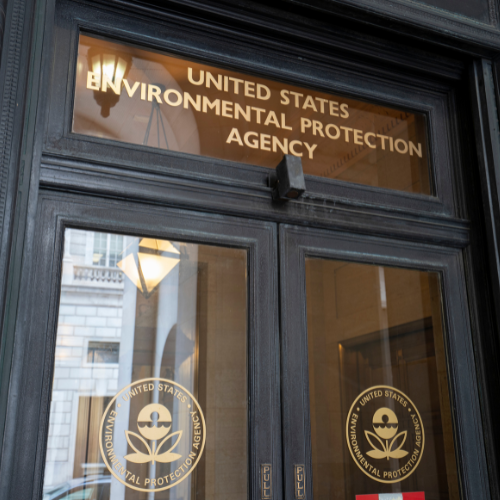
Exposing the Truth: Manufacturers’ Knowledge of Silica Risks
December 23, 2024
New Year, Safer Practices: Asbestos Prevention Resolutions for 2025
January 3, 2025Mesothelioma, a rare and aggressive cancer caused by asbestos exposure, is often surrounded by misconceptions. These myths can create confusion, prevent timely diagnoses, and delay necessary action. At Brayton Purcell LLP, we believe knowledge is power. By addressing mesothelioma myths and sharing research-based facts, we aim to empower individuals and families impacted by mesothelioma.
In this article, we’ll debunk widespread myths and provide the truth about mesothelioma, asbestos exposure, and legal options for those affected.
Myth 1: Asbestos Exposure is a Thing of the Past
Many people believe asbestos is no longer a threat because it was banned decades ago. While the use of asbestos has been restricted in the United States, it has not been fully banned. Products containing asbestos, such as brake pads, insulation, and roofing materials, can still be imported and sold.
Fact: Asbestos Exposure Still Occurs Today, and Its Dangers Persist
Additionally, older buildings and homes constructed before the 1980s often contain asbestos materials. Renovations, demolitions, or natural wear and tear can release asbestos fibers into the air, posing a risk to anyone nearby.
According to the Environmental Protection Agency (EPA), asbestos-related hazards remain a significant public health concern. Workers in construction, shipyards, and other industries, as well as homeowners living in older properties, remain at risk.
Myth 2: Only Long-Term Asbestos Exposure Causes Mesothelioma
While long-term exposure increases the risk, even brief encounters with asbestos fibers can lead to mesothelioma or other asbestos-related diseases. Asbestos fibers are microscopic and can remain in the body for decades. Over time, these fibers irritate the lining of the lungs, abdomen, or heart, leading to cancer.
Fact: Even Short-Term Exposure to Asbestos Can Cause Mesothelioma
This is particularly true for individuals who experienced secondary exposure, such as family members of workers who unknowingly brought asbestos dust home on their clothing. Children, spouses, and others living in the same household were often exposed, even if they never worked with asbestos directly.
Myth 3: Mesothelioma Only Affects the Lungs
While pleural mesothelioma—which impacts the lining around the lungs—is the most common form, asbestos exposure can cause cancer in other areas of the body:
- Peritoneal Mesothelioma: Develops in the lining of the abdomen.
- Pericardial Mesothelioma: Forms around the lining of the heart.
- Testicular Mesothelioma: A rare form that affects the lining of the testicles.
Fact: Mesothelioma Can Affect Multiple Parts of The Body
Each type of mesothelioma presents unique symptoms, making early diagnosis and treatment challenging. Misunderstanding this fact can result in missed warning signs for non-pleural forms of the disease.
Myth 4: Mesothelioma Symptoms Appear Immediately After Exposure
One of the most challenging aspects of mesothelioma is its long latency period. Individuals exposed to asbestos may not experience symptoms for decades after their initial exposure. This delay often leads to late-stage diagnoses, limiting treatment options.
Fact: Mesothelioma Has a Long Latency Period of 10 to 70 Years
Common mesothelioma symptoms, such as shortness of breath, fatigue, and chest pain, are often mistaken for less severe respiratory issues, delaying a proper diagnosis further. If you or a loved one has a history of asbestos exposure, even decades ago, it’s essential to inform your doctor and monitor for symptoms.
Myth 5: Only Factory or Construction Workers Are at Risk
While workers in construction, shipbuilding, and manufacturing have a higher risk due to occupational exposure, asbestos hazards are not limited to industrial settings.
Fact: Asbestos Exposure Can Occur in Many Environments, Including Homes, Schools, and Offices
Asbestos was widely used in building materials, meaning:
- Homes and buildings built before the 1980s often contain asbestos in insulation, tiles, and ceilings.
- Schools and public buildings may expose teachers, staff, and students to asbestos.
- Family members of workers can suffer from secondary exposure.
Additionally, firefighters, mechanics, and military veterans are at significant risk due to asbestos-containing materials in vehicles, ships, and buildings.
Myth 6: Mesothelioma is Curable
There is no definitive cure for mesothelioma, but advancements in treatment have made it possible to extend life expectancy and improve quality of life. Treatments include:
- Surgery to remove cancerous tissue.
- Chemotherapy to slow tumor growth.
- Immunotherapy to boost the body’s natural defenses against cancer.
- Clinical Trials offering access to cutting-edge therapies.
Fact: While Mesothelioma Cannot Currently Be Cured, Early Diagnosis Can Improve Treatment Outcomes and Quality of Life
Early detection plays a crucial role in determining the effectiveness of treatment. Unfortunately, because symptoms often appear late, mesothelioma is typically diagnosed in advanced stages.
Myth 7: There’s No Legal Recourse for Mesothelioma Patients
If you or a loved one has been diagnosed with mesothelioma, you may be eligible for financial compensation. Companies that manufactured or used asbestos were often aware of its dangers but failed to protect workers and the public. As a result, legal avenues exist to hold these companies accountable.
Fact: Victims of Asbestos Exposure Have Legal Options to Seek Compensation
Compensation can help cover:
- Medical expenses
- Lost wages
- Pain and suffering
- Financial security for families
At Brayton Purcell LLP, we specialize in asbestos litigation and have successfully represented mesothelioma victims for over 40 years. Our experienced legal team can help you navigate the process and secure the compensation you deserve.
How to Protect Yourself and Your Family
Understanding the facts about mesothelioma and asbestos is the first step in protecting yourself and your loved ones. Here are key takeaways to stay safe:
Be Aware of Asbestos Risks
If you live or work in older buildings, have them inspected for asbestos-containing materials.
Monitor Symptoms
If you have a history of asbestos exposure, watch for symptoms like coughing, shortness of breath, and chest pain.
Seek Medical Help Early
Regular check-ups can help detect issues sooner.
Know Your Legal Rights
If diagnosed, speak to an attorney with experience in asbestos litigation to explore your options.
Knowledge is Power – Brayton Purcell LLP
Misconceptions about mesothelioma and asbestos exposure can prevent people from taking the steps necessary to protect their health and rights. By separating fact from fiction, we can raise awareness, promote early detection, and hold negligent companies accountable.
At Brayton Purcell LLP, we are dedicated to supporting mesothelioma patients and their families. If you or a loved one has been diagnosed, contact Brayton Purcell LLP today or give us a call at (800) 361-2417 for a free consultation. We’ll help you fight for justice, financial security, and peace of mind.














